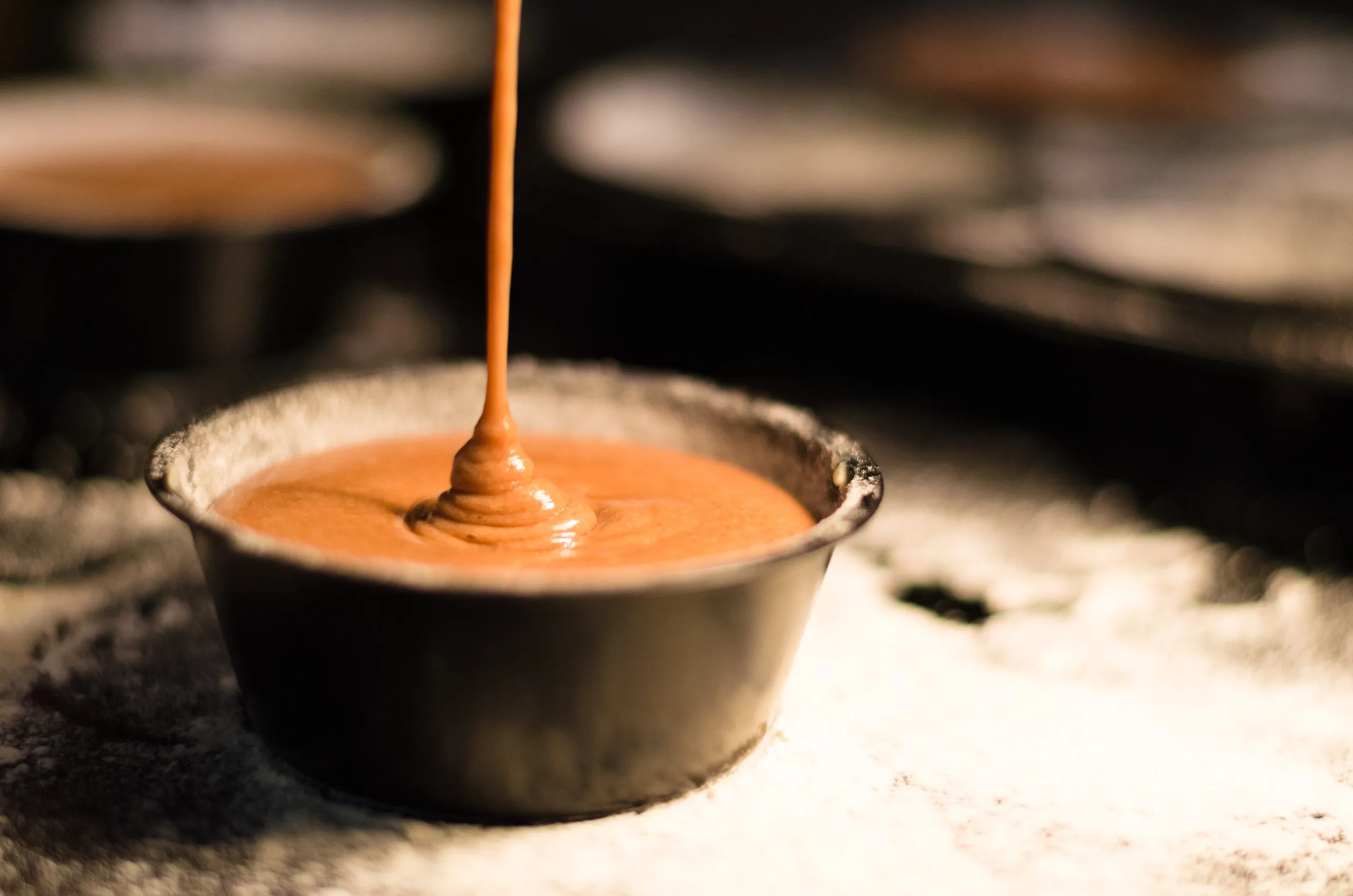Introduction of Can Dogs Have Caramel
When it comes to our furry friends, ensuring their well-being is a top priority. As pet owners, we want to provide them with the best care and nutrition possible. However, it’s essential to be mindful of what human foods are safe for our canine companions. One such food that sparks curiosity and concern is caramel. In this article, we will explore the topic of feeding caramel to dogs and shed light on its safety and potential effects. By understanding the risks involved, we can make informed decisions about what treats are suitable for our beloved pets.
Caramel has gained popularity as a tasty and indulgent treat for humans, but can dogs enjoy it as well? Let’s delve into this question and uncover the facts surrounding caramel consumption for dogs.
Understanding Caramel
Caramel is a popular confectionery treat known for its rich and sweet flavor. It is made through a process called caramelization, which involves heating sugar until it melts and turns into a golden-brown liquid. Let’s explore the fascinating world of caramel and understand its composition and different types:
1. Definition and Common Ingredients
Caramel refers to a range of confections created by heating sugar. The process of caramelization involves breaking down the sugar molecules to produce a distinct flavor and color. While there can be variations in recipes, the common ingredients found in caramel include:
- Sugar: The primary component that undergoes caramelization when heated.
- Butter: Often added to enhance the texture and richness of caramel.
- Cream: Used in some recipes to create a creamy texture and provide a smooth mouthfeel.
- Flavorings: Vanilla extract, sea salt, or other extracts may be incorporated to add additional flavors.
2. Types of Caramel
Caramel can come in various forms, each with its own unique characteristics. Here are the main types of caramel you might encounter:
- Soft Caramel: This type of caramel is chewy and pliable, often used as a filling for candies or as a topping for desserts.
- Hard Caramel: Hard caramel is firm and brittle, typically used for making caramelized sugar decorations or as a component in certain confections.
- Liquid Caramel: Liquid caramel is a syrupy form commonly used as a sauce or flavoring agent in various desserts, beverages, and baked goods.
3. Main Components of Caramel
To create caramel, a combination of ingredients is carefully heated and processed. The main components that make up caramel include:
- Sugar: As mentioned earlier, sugar is the key ingredient that caramelizes when exposed to heat, resulting in the characteristic caramel flavor and color.
- Butter: Butter is often added to caramel recipes to enhance the texture, provide richness, and add a creamy taste.
- Flavorings: Depending on the desired taste, various flavorings like vanilla extract, sea salt, or other extracts may be included to enhance the overall flavor profile.
Understanding the composition and types of caramel helps us appreciate its complexity and the role it plays in the culinary world. However, when it comes to dogs, it’s crucial to consider their dietary needs and potential risks associated with feeding them caramel.
Health Implications
Feeding caramel to dogs can have several health implications that dog owners should be aware of. Let’s explore the specific concerns related to feeding caramel to dogs and understand the potential impact it can have on their health:
1. Sugar and its Effects
Caramel is primarily made from sugar, and feeding dogs sugary treats like caramel can lead to various health issues, including:
- Obesity: Excessive sugar intake can contribute to weight gain and obesity in dogs. This can lead to a range of health problems, such as joint issues, decreased mobility, and an increased risk of other diseases.
- Diabetes: Regular consumption of sugary treats like caramel can potentially lead to the development of diabetes in dogs. Dogs with diabetes require careful management of their diet and often need insulin injections to regulate their blood sugar levels.
- Dental Issues: Sugar is a leading cause of dental problems in dogs. When dogs consume caramel, the sugar can stick to their teeth, promoting the growth of plaque and increasing the risk of cavities, gum disease, and bad breath.
2. Allergic Reactions and Gastrointestinal Disturbances
Caramel may contain additives, flavorings, or other ingredients that can trigger allergic reactions in some dogs. Allergies can manifest as skin irritations, itching, rashes, or digestive issues like vomiting and diarrhea. Additionally, the richness and high sugar content of caramel can be challenging for a dog’s digestive system to process, leading to gastrointestinal disturbances.
It’s important to note that every dog is different, and some may be more sensitive to the effects of caramel than others. While a small amount of caramel may not cause immediate harm in certain dogs, it is best to err on the side of caution and avoid feeding them caramel altogether to mitigate potential health risks.
Instead of caramel, prioritize your dog’s health by offering them nutritionally balanced treats specifically formulated for dogs. There are a wide variety of dog-friendly treats available that are tasty, safe, and designed to meet their dietary needs. As always, consult with your veterinarian for personalized advice and recommendations regarding your dog’s diet and treat options.
By being mindful of the potential health implications of feeding caramel to dogs, we can help ensure their well-being and provide them with a diet that promotes their overall health and happiness.
Alternatives to Caramel
While caramel may not be suitable for dogs, there are plenty of safe and healthy treat alternatives that you can offer to your furry friend. When considering treats for your dog, it’s essential to prioritize their health and consult with a veterinarian. Here are some alternatives to caramel that you can consider:
1. Commercially Available Treats
There are numerous commercially available dog treats that are specifically formulated to meet their nutritional needs. Look for treats that:
- Are made with high-quality, natural ingredients
- Have a balanced nutritional profile
- Promote dental health (such as dental chews or tartar-control treats)
- Are free from harmful additives, preservatives, and artificial flavors
2. Fruits and Vegetables
Many dogs enjoy the taste and texture of fruits and vegetables. These can make for healthy and refreshing treats. Some safe options include:
- Apple slices (without seeds or core)
- Carrot sticks or baby carrots
- Blueberries
- Watermelon (seedless)
- Pumpkin puree (unsweetened and cooked)
Always remember to introduce new fruits and vegetables gradually and in moderation to prevent digestive upset. Some dogs may have specific dietary restrictions or allergies, so it’s crucial to consult with your veterinarian to ensure the chosen fruits and vegetables are safe for your dog.
3. Homemade Treats
If you enjoy baking or want to have complete control over the ingredients, you can make homemade dog treats. Here are a few ideas:
- Peanut butter and banana treats: Mash ripe bananas and mix them with natural, unsweetened peanut butter. Form small balls or use cookie cutters to create fun shapes. Bake until firm.
- Sweet potato chews: Slice sweet potatoes into thin strips and bake them until they are crispy. These make a tasty and nutritious chewy treat.
- Frozen yogurt bites: Mix plain yogurt (without artificial sweeteners) with mashed fruits like strawberries or blueberries. Spoon the mixture into ice cube trays and freeze for a cool and refreshing treat.
Remember to use dog-friendly ingredients and avoid adding any harmful substances such as chocolate, xylitol, or excessive salt.
4. Interactive Toys and Puzzles
Engaging your dog’s mind and providing mental stimulation can be just as rewarding as offering treats. Consider using interactive toys and puzzles that allow your dog to work for their food or treats. These toys can keep them entertained, provide a challenge, and help promote their cognitive abilities.
Always consult with your veterinarian before introducing any new treats or changes to your dog’s diet, especially if your dog has specific dietary requirements, allergies, or health conditions. They can provide personalized advice based on your dog’s individual needs.
By opting for safe and healthy treat alternatives, you can ensure that your dog enjoys delicious snacks without compromising their health and well-being.

FAQs About Can Dogs Have Caramel
Here are some frequently asked questions about dogs and caramel:
1. Can I give my dog a piece of caramel popcorn?
It’s best to avoid giving your dog caramel popcorn. Caramel contains sugar, additives, and potentially harmful ingredients. Additionally, popcorn can be a choking hazard for dogs. Stick to dog-friendly treats and snacks specifically made for their consumption.
2. What do I do if my dog ate caramel?
If your dog accidentally ingests caramel, monitor them for any signs of discomfort or digestive issues. Mild cases may only cause temporary upset stomach, while larger quantities or certain ingredients could lead to more severe problems. Contact your veterinarian for guidance and advice based on your dog’s specific situation.
3. What happens if my dog eats caramel apple?
If your dog consumes a caramel apple, there are several concerns to consider. Caramel apples typically contain caramel, which is high in sugar and can lead to weight gain, dental issues, and other health problems in dogs. Additionally, the apple core and seeds can be a choking hazard or cause digestive blockages. Contact your veterinarian for appropriate advice based on the amount ingested and your dog’s size and overall health.
4. Can dogs eat caramel whipped cream?
It is generally not recommended to give dogs caramel whipped cream. Whipped cream often contains sugar, additives, and artificial flavorings that can be harmful to dogs. The high fat content can also lead to digestive issues and potential weight gain. Stick to treats specifically made for dogs or consult your veterinarian for safe and appropriate alternatives.
Remember, when it comes to your dog’s diet, it’s always best to consult with your veterinarian. They can provide personalized advice based on your dog’s individual needs, health condition, and dietary restrictions to ensure their well-being and safety.
Conclusion Can Dogs Have Caramel
In conclusion, it’s important for dog owners to understand the potential risks and health implications of feeding caramel to dogs. Caramel contains ingredients like sugar, additives, and artificial sweeteners that can be harmful to dogs and may lead to obesity, dental issues, and digestive problems. Moreover, certain caramel products may also contain allergens that can trigger adverse reactions in dogs.
To prioritize the well-being of our furry friends, it’s crucial to make informed choices about their diet and treats. Instead of caramel, consider offering safe and healthy alternatives such as commercially available dog treats made with natural ingredients, fruits and vegetables that are safe for dogs, or homemade treats prepared with dog-friendly ingredients. Interactive toys and puzzles can also provide mental stimulation and a rewarding experience for your dog.
Remember to consult with your veterinarian before introducing any new treats or making changes to your dog’s diet, as they can provide personalized advice based on your dog’s specific needs, health condition, and dietary restrictions.
By being proactive and cautious about the foods we offer our dogs, we can ensure their overall health and happiness. Let’s prioritize their well-being by providing them with a balanced and appropriate diet that meets their nutritional requirements and avoids potential risks associated with feeding them caramel or other unsuitable foods.
Together, we can create a safe and nourishing environment for our beloved canine companions, fostering their optimal health and strengthening the bond we share with them.
Click here for more info
